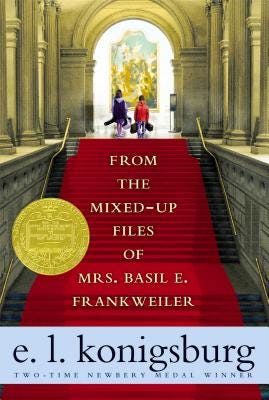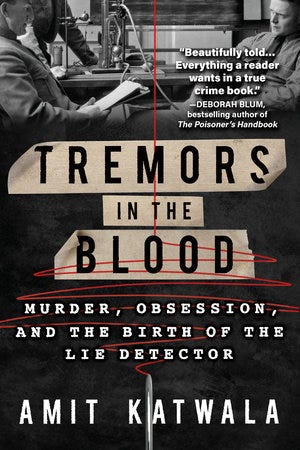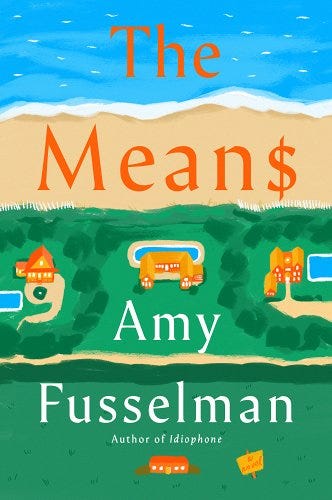You Want to Spend a Night at a Museum
You binged “Poker Face” or enjoy scrolling through Zillow
Hi friends,
I hope you had a great weekend. I was lucky enough to attend the Fur Ball, an annual event in Philadelphia to raise funds for Morris Animal Refuge, one of America’s oldest animal shelters. There were adorable puppies and tiny kittens.
And, now, what read if …
You’ve Ever Dreamed of Spending a Night at the Museum
From the Mixed-Up Files of Mrs. Basil E. Frankweiler by E.L. Konigsburg
The Fur Ball was held at the Franklin Institute, a beloved science museum in Philly. A friend and I arrived early to help set up and got to enter through the museum’s storage area, achieving a lifelong dream. I immediately suggested we ‘pull a Frankweiler’ and spend the night. Reader, I am sad to say that plan did not work, but if you too share that dream, please give From the Mixed-Up Files of Mrs. Basil E. Frankweiler a read (or a re-read).
For the uninitiated, the Newberry-award-winning middle grade novel follows two siblings, 12-year-old Claudia and her younger brother Jamie, who run away from home and decide to live in New York’s Metropolitan Museum of Art. In between diving for coins while bathing in the museum’s famed fountain and joining visiting school group tours, the pair end up entangled in an international art mystery.
I know this is the second week in a row I’ve highlighted a middle grade novel (I promise to take a break!), but like Regarding the Fountain, this one will appeal to adults and young readers alike. As Jia Tolentino wrote in The New Yorker for the book’s fiftieth anniversary, “It’s very sophisticated, with the deep story unfolding subtly under the narrative surface.” Mrs. Basil E. Frankweiler narrates the story, imbuing it with adult observations and asides I missed as a child. Now, I see it as a story about the ways both children and adults crave adventure and escape from their everyday lives.
“Poker Face” Has You Thinking About Lie Detection
Tremors in the Blood by Amit Katwala*
The first season of “Poker Face,” Peacock’s case-of-the-week show starring Natasha Lyonne as a human lie detector, just wrapped. It’s a lot of fun, and Lyonne is a joy to watch as Charlie Cale, a TV detective who shares DNA with Columbo and Rockford, with the added twist of always knowing when someone tells her a falsehood.
Charlie, it turns out, is far more accurate than a polygraph machine, the topic of Amit Katwala’s book Tremors in the Blood, which traces the history of the controversial technology. The lie detector first burst onto the scene in 1922, when it was used as part of a high-profile murder investigation in Berkeley, California. Originally intended to make the justice system fairer and reduce the use of so-called “third degree” interrogation tactics, it quickly grew beyond the control of the three men — a scientist-detective, a progressive police chief and a teenage intern — who invented it. Katwala takes us into the laboratory where the polygraph was first developed, as well as the interrogation rooms and courthouses where it was first tested.
Tremors in the Blood ultimately shows that even as investigators continue to rely on polygraph machines today, researchers have known since their creation that they’re unreliable. Being connected to a lie detector can be stressful enough for it to pick up on the “tremor in the blood” that is thought to indicate deceit. A strong pick for true crime fans.
Bonus recommendation: Jill Lepore’s The Secret History of Wonder Woman documents how Harvard professor William Moulton Marston, his wife Elizabeth Holloway Marston and their domestic partner Olive Byrne created both an early version of the lie detector AND Wonder Woman, while living a truly unconventional life.
You Spend a Lot of Time Zillow Stalking
The Means by Amy Fusselman*
I am not in the market for a new house, but that doesn’t stop me from looking up every “for sale” sign I pass on Zillow. Bring on your tastefully decorated living rooms, your trendy bathrooms and your truly bizarre finds (h/t
for always delivering on this last one).For more housing madness, check out The Means, a weird, satirical novel about a woman slowly driven mad by her obsession with building a beach house. As the book opens, Shelly Means, a New York city stay-at-home mom, is on the cusp of achieving her dream of owning a home on the Hamptons. So what if it will be the smallest house in the neighborhood — and made entirely of shipping containers? But then, her husband’s work as a voice-over artist slows, and he urges her to cancel their construction project. Shelly, though, just can’t give up.
A lot of novels claim to be satirical but aren’t actually funny. The Means delivers the laughs — and the absurdity. The novel grows weirder as it continues: at one point the family dog starts talking. It’s a short book — clocking in at 250 pages — that packs in the hilarity, a critique of the excesses of capitalism and the lives of Manhattan’s elite.
That’s it for me today. I’ll be back on Thursday with a Q&A featuring Leslye Penelope, author of the magical heist book The Monsters We Defy.
*I received free copies of Tremors in the Blood and The Means in exchange for an honest review.
What to Read If is a free weekly book recommendation newsletter. Need a rec? Want to gush about a book? Reply to this email, leave a comment or find me on Twitter @elizabethheld.
If you’re reading this on Substack or were forwarded this email, and you’d like to subscribe, click the button below.
Disclosure: I am an affiliate of Bookshop.org and I will earn a commission if you click through and make a purchase.







I read Regarding the Fountain because of your review and it was a delight! My nieces are nearing middle grade reading age and I can't wait to read more middle grade books and pass them on.
Ooh! I loved the Monsters We Defy. I can't wait to read your interview!